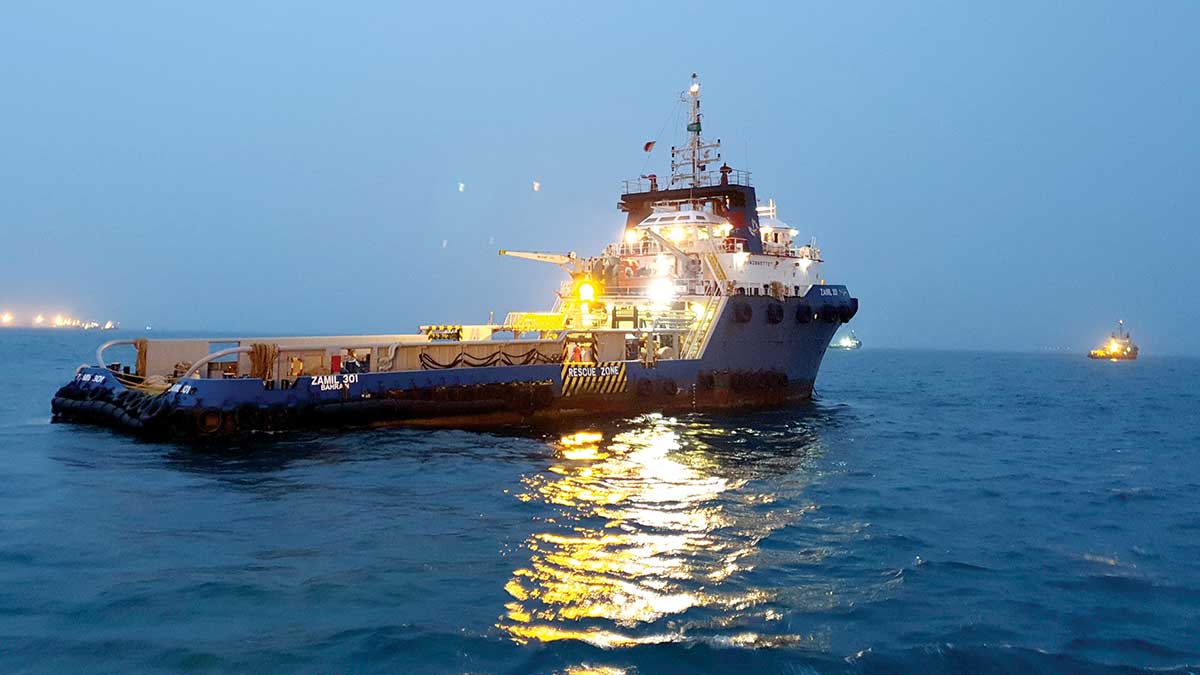Digitalization project
Vessel tracking system a milestone in digitalization

Global January 07, 2021
The Zamil 301 is the first vessel to be quipped with the fuel monitoring and tracking system.
In line with the company’s Digital Transformation Program and driven by the introduction of the Fourth Industrial Revolution, Project Management (PM) is expediting the deployment of Fuel Monitoring and Vessel Tracking Systems (FM&VTS) to support the company’s ambitious vision to be the world’s leading digitalized energy company. The Offshore Projects Department, under Upstream Project Management, is the first organization deploying a fleetwide fuel and performance monitoring system.
PM vice president Abdulkarim A. Al-Ghamdi said, “The deployment of FM&VTS is a continuous effort of PM for its journey to accomplish excellence by incorporating the latest technologies in its projects to achieve safe operations, cost optimization, emissions reduction, and operational efficiency.”
Zamil 301, paving the way
Zamil 301 is the first vessel to be equipped with the Ascenz’ FM&VTS. Experts from France, Singapore, Germany, and the UAE boarded the ship for the first commissioning.
The Marine Department Control Center will be equipped with a dedicated dashboard to monitor the connected vessels in real-time.
The success of the FM&VTS implementation pilot on one offshore support vessel, in full collaboration with the Marine Department, has paved the way for full deployment, which will be mandated for the entire fleet. This is a first-of-its-kind FM&VTS implementation by Aramco, which caters to its long-term vision of digitalization of its fleet and operations.
State-of-the-art technology
These systems combine state-of-the-art digital technologies to deliver transparency and support decision making. The Internet of Things platform onboard gathers high frequency data from any available source on the ship. Afterward, data is compressed, encrypted, and sent to the shore for advanced processing and analysis. Real-time data transmission gives the onshore team the same visibility of operations as the on-board crew.
The systems’ benefits are multifold. Automatic data collection removes human errors that can happen in a manual process. It also reduces the teams’ administrative burden. The increased data quality allows analysis that are more reliable and results in decisions that are more informed.
The power of cloud computing and artificial intelligence is used to derive insights from the raw data. The reports can either assess the past performance or give advice to optimize the future performance. The process of benchmarking ships is also useful to compare similar situations and enforce best practices among the crews.
The online platform, an open ecosystem, can integrate third-party data sources such as weather forecasts. This specific information is very important to explain the performance of a vessel. The platform can also send data to a third-party system to encourage collaboration and increase business process automation.
With the latest smart technologies equipping the vessel, Aramco will be transforming every single ship in offshore projects into a smart vessel, resulting in the continued deployment of a wide swath of technologies in its offshore projects since 2019 and into the future.



